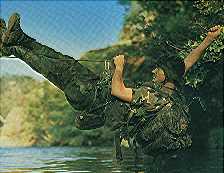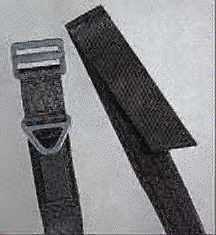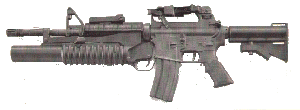RIGGER'S BELTS MIGHT HAVE SAVED RANGERS' LIVES

THE FORT BRAGG POST

Four Rangers dead in the flooded swamps of Florida after a training screw-up in 1995. They were cold, wet, hungry, exhausted and trying to tie life-support Swiss seats using 13-foot rope sections to hold snaplinks to slide across a rope bridge (see photo above) with numb fingers as the wind chilled their weakened bodies into hypothermia and death. This is not the first time starved Ranger school students have died in the Florida swamps when the line from "hard-ass" to "dumb-ass" was crossed as retired CSM Eric Haney describes in his superb book, Inside Delta Force. On page 23 he describes how in 1977 twenty-three men had gone into hypothermia during a night crossing of the Yellow River with 4 men dying. I guess in our eagerness to play feel-good ego games we never learn to act like adults.
They needed the life-support belt at their waists to hold a carabiner/snaplink to hold them up on the rope so they could cross the neck-deep water using the rope bridge.
However, this is totally unnecessary! Individual tasks that theoretically should take a few minutes result in half-hours and hours for large groups. The larger the group, the more time needed. Every Ranger and Soldier can and should have a life-support "Rigger's belt" at their BDU trouser waist so all that needs to be done is to clip a snaplink (carabiner) on, connect to the river crossing rope, and CROSS.

A "Rigger's belt" of black type XIII nylon parachute webbing and friction-lock buckle available for $3.75 at some Fort Bragg shoppettes (and off-post surplus stores for different prices) can be on the waists of every Paratrooper's BDU trousers. Ask your local parachute Rigger to make some for you and your men. Tuck in your BDU shirt and clip on a snap-link and you're ready to cross a one-rope bridge in seconds--not bone-chilling minutes.
Had these belts been with the Ranger students during the tragedy there might not have been a tragedy at all. What is needed is for some base leaders to discard their prejudice against "Rigger's belts" and consider the greater common good and tactical benefits that these belts can provide.
Uniformity can be maintained by using a black color. That they are not "Army issue" or "regulation" is not a valid excuse. [2002 Editor's note: the Natick belt depicted above is now "issue"] Change the regulation, make them issue, or at least an authorized option. Rangers and Paratroopers are not "ordinary Soldiers" (as if there is such a thing); they can ill afford to carry a flimsy black web belt into the field that cannot support a useful load with life support reliability.
In fact, even mechanized infantry Soldiers could use "Rigger's belts." They should be able to ride on M1A1/A2 Abrams tank turret bustle racks provided they snap-link (carabiner) themselves in. (Refer to FM 7-8 "Infantry Platoon and Squad")
A life-support "Rigger's belt" can be used to pull Soldiers out by rope from the bottoms of hills, cliffs or up from dense trees by hovering helicopters unable to land. In the movie, "The Green Berets" there is a very interesting scene at the end of the movie where John Wayne and his men rappel off the balcony of a captured NVA General hooked up to Rigger's belts around their uniform pants.
Certainly if the time/situation permits, use harnesses and tied Swiss seats specific for the purpose in mind. But when the time is critical and these things are not available, then we must be able to turn to something organic to the Soldier--his uniform's "Rigger's belt."
The Natick Rigger's belt is made by Blackhawk Industries and can be ordered from them or U.S. Cavalry Store by clicking on their hyperlinks.
 Return to Paratrooper 2000, click on M4 5.56mm Carbine with M203 40mm grenade launcher
Return to Paratrooper 2000, click on M4 5.56mm Carbine with M203 40mm grenade launcher
RETURN TO U.S. ARMY AIRBORNE EQUIPMENT SHOP